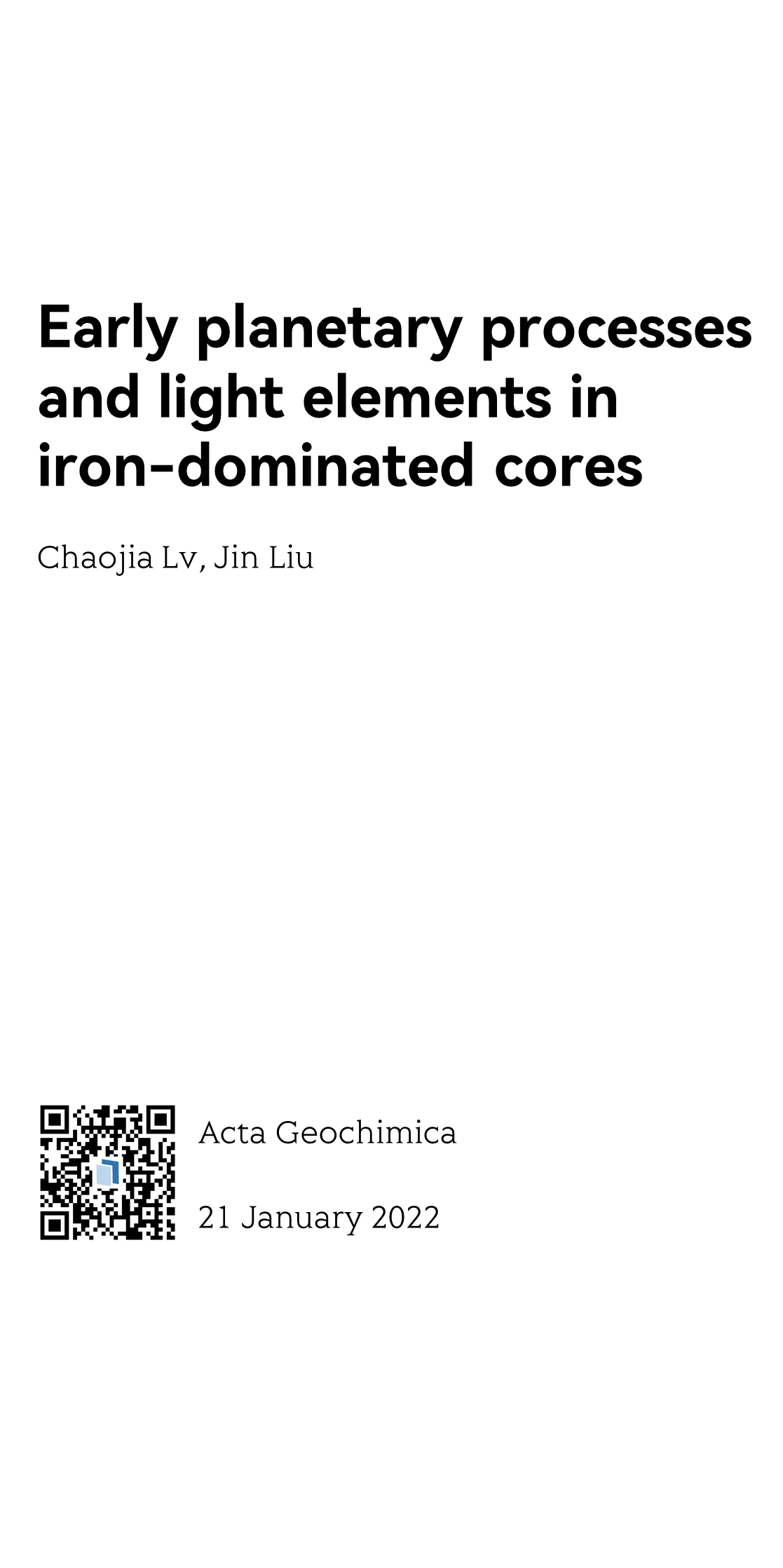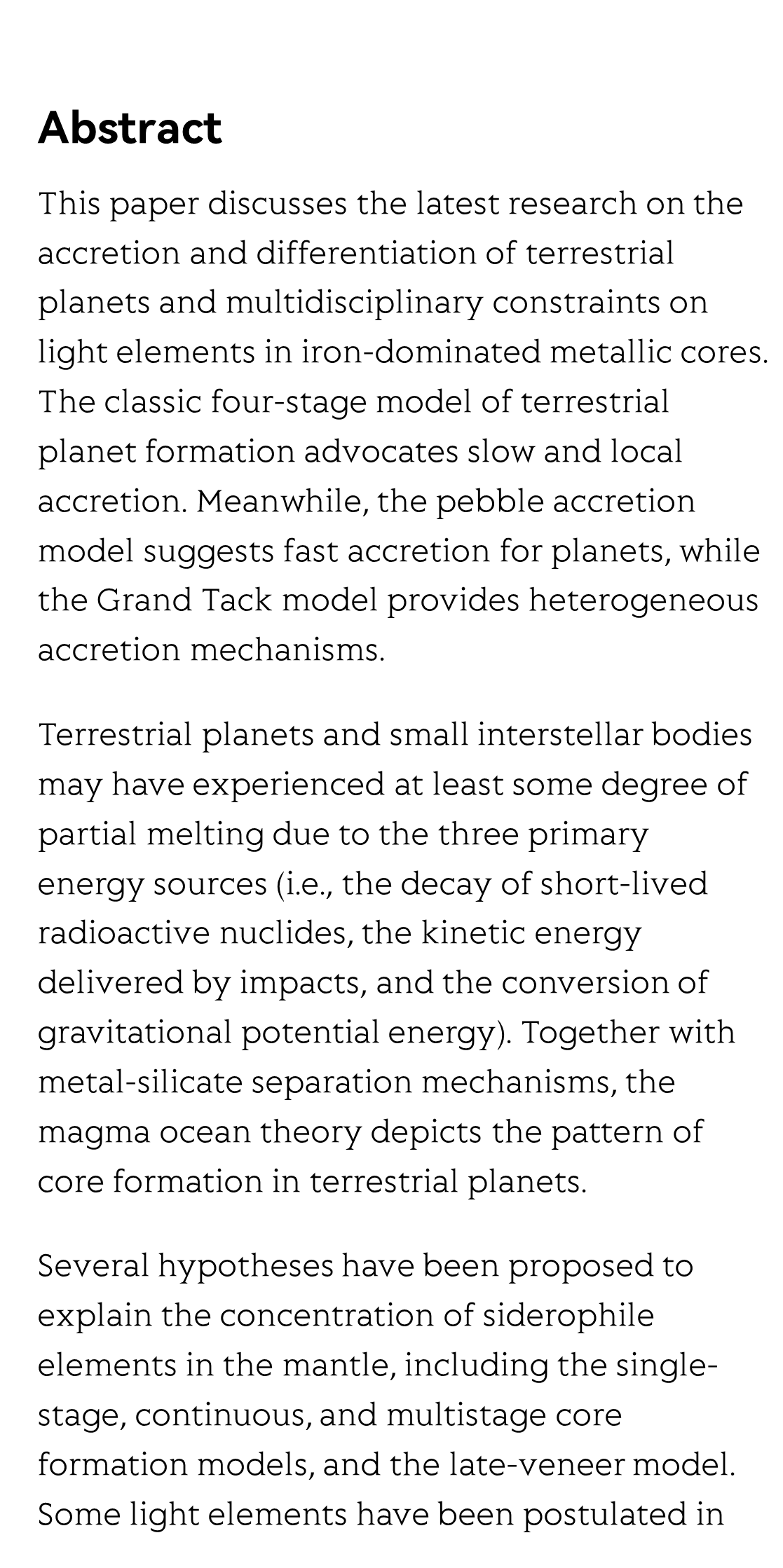(Peer-Reviewed) Early planetary processes and light elements in iron-dominated cores
Chaojia Lv 吕超甲 ¹, Jin Liu 刘锦 ¹ ²
¹ Center for High Pressure Science and Technology Advanced Research, Beijing, 100094, China
中国 北京 北京高压科学研究中心
² CAS Center for Excellence in Deep Earth Science, Guangzhou, 510640, China
中国 广州 中国科学院 深地科学卓越创新中心
Abstract
This paper discusses the latest research on the accretion and differentiation of terrestrial planets and multidisciplinary constraints on light elements in iron-dominated metallic cores. The classic four-stage model of terrestrial planet formation advocates slow and local accretion. Meanwhile, the pebble accretion model suggests fast accretion for planets, while the Grand Tack model provides heterogeneous accretion mechanisms.
Terrestrial planets and small interstellar bodies may have experienced at least some degree of partial melting due to the three primary energy sources (i.e., the decay of short-lived radioactive nuclides, the kinetic energy delivered by impacts, and the conversion of gravitational potential energy). Together with metal-silicate separation mechanisms, the magma ocean theory depicts the pattern of core formation in terrestrial planets.
Several hypotheses have been proposed to explain the concentration of siderophile elements in the mantle, including the single-stage, continuous, and multistage core formation models, and the late-veneer model. Some light elements have been postulated in the core to account for Earth’s outer core density deficit.
A plethora of constraints on the species and concentration of light elements have been put forward from the perspectives of cosmochemical and geochemical fingerprints, geophysical observations, mineral physics, numerical modeling, and theoretical prediction. Si and O may be the two leading candidates for Earth’s outer core light elements; however, it still remains an open question. S is another potential light element in Earth’s core, most likely with less than 2 wt%. Other light elements including H and C, may not exceed 1 wt% in the core.
Moreover, the accretion and differentiation history would provide some clues to light elements in other terrestrial planetary cores. In principle, a larger heliocentric distance corresponds to accretion from more oxidized materials, leading to a higher S concentration in the Martian core. On the contrary, Mercury is close to the Sun and has accreted from more reduced materials, resulting in more Si in the core.
Flicker minimization in power-saving displays enabled by measurement of difference in flexoelectric coefficients and displacement-current in positive dielectric anisotropy liquid crystals
Junho Jung, HaYoung Jung, GyuRi Choi, HanByeol Park, Sun-Mi Park, Ki-Sun Kwon, Heui-Seok Jin, Dong-Jin Lee, Hoon Jeong, JeongKi Park, Byeong Koo Kim, Seung Hee Lee, MinSu Kim
Opto-Electronic Advances
2025-09-25
Dual-frequency angular-multiplexed fringe projection profilometry with deep learning: breaking hardware limits for ultra-high-speed 3D imaging
Wenwu Chen, Yifan Liu, Shijie Feng, Wei Yin, Jiaming Qian, Yixuan Li, Hang Zhang, Maciej Trusiak, Malgorzata Kujawinska, Qian Chen, Chao Zuo
Opto-Electronic Advances
2025-09-25





